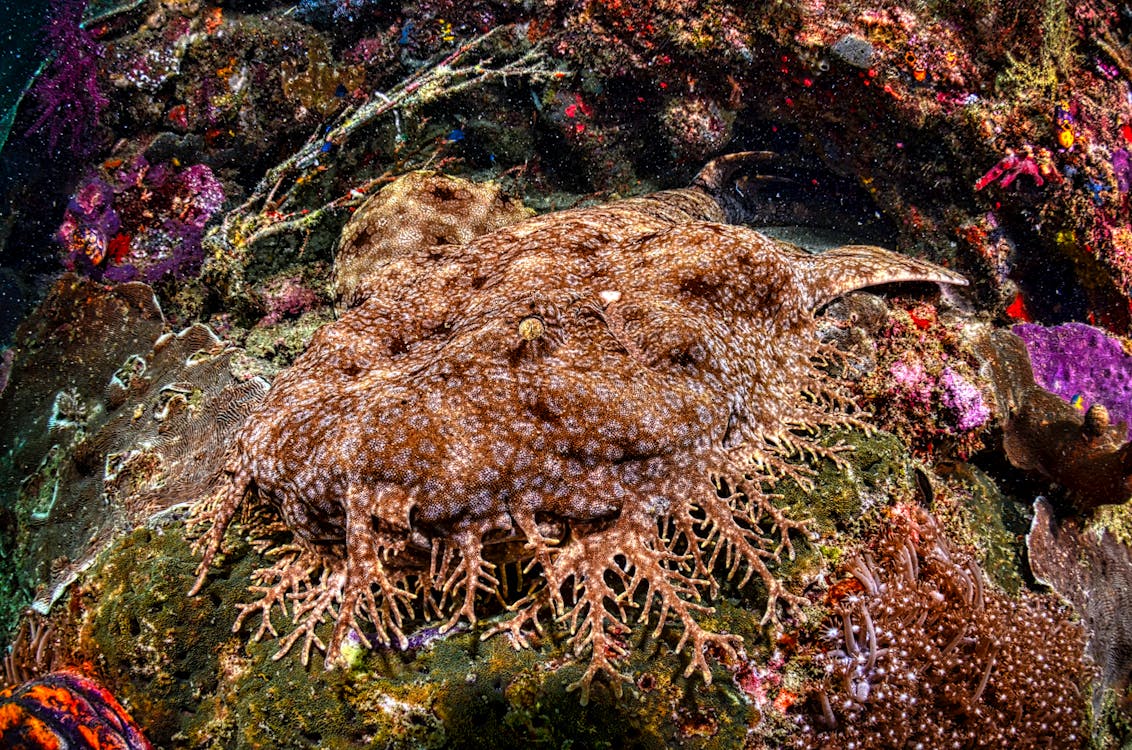Deep below the surface of the ocean, there are many mysteries that we don’t know much about – but as technology advances, more and more is revealed to us every day. There are many fascinating creatures found in the deep sea, including things you never would have thought could survive without light! Here are 10 of the most terrifying sea creatures you will ever see!
Goblin Shark

This deep-sea shark is completely harmless and often referred to as a living fossil due to its primitive anatomy. However, it isn’t hard to understand why some people are afraid of it. Its enormous jaws resemble those of a goblin or alien creature, and its bulging eyes protrude from its triangular head. Its gills appear to be covered in warts, making them appear even more ominous.
Humboldt Squid
The Humboldt squid may not be as familiar to you as some of its infamous brethren—the blue whale, for example, or Godzilla—but believe us when we say that it belongs in their exalted company. At nearly 4 meters long and weighing in at up to 60 kilograms, it’s one of the largest living invertebrates on Earth. Not only is it huge but also absolutely terrifying.
Mola Mola

With a name that translates to millstone, you already know what to expect from one of these creatures. They have a massive round body and it’s often covered in huge, stinging sea lice. We don’t recommend scuba diving when Mola Mola are around!
Giant Isopod
The giant isopod isn’t just a monster. It’s also probably one of your new favorite animals. These cool creatures are still somewhat mysterious and scientists don’t know much about them, so much of what you know about them is from rumors and myth. Here’s a rundown of everything you need to know about one of nature’s most terrifying creatures: The Giant Isopod.
Wobbegong

These large bottom-dwelling sharks are believed to live at depths of up to a thousand feet. They camouflage themselves by using their broad, flat heads and backs to blend in with rocks on the sea floor. In addition, they have rows of fleshy flaps along their bodies that also help them conceal themselves from passing prey.
Opah
The Opah is a striking fish with large, red eyes and a long body. It averages around six feet in length, but has been observed growing up to nine feet. It has an organ at its base called a pre-operculum that can produce light and make it flash colors that are used for both communication and attracting prey. This species lives at depths of over 6,000 feet and uses bioluminescence (produced by bacteria) to communicate with other fish from great distances underwater.
Pufferfish

The pufferfish’s prominent spines are used primarily for defense—many of these species are toxic, with deadly levels of tetrodotoxin. Their neurotoxin is on a level rivaled only by scorpions, to which they also bear a resemblance. In fact, pufferfish sometimes hide in crevices where they can be easily stepped on, as their fins are not strong enough to propel them out of harm’s way.
Blobfish
The Blobfish, also known as a fathead, is largely considered to be one of if not the ugliest animal on earth. It lives on a diet of almost nothing but tiny crustaceans called krill which it sucks up from underneath or scoops out of midwater with its foreward facing mouth and gulp down whole.
Frilled Shark

The frilled shark is one of few species of shark that can survive in both saltwater and freshwater. Although it’s usually found in deep waters, there have been sightings as shallow as 300 feet. This makes it an incredibly frightening prospect: since so little is known about them, these creatures could easily swim up rivers or estuaries if food became scarce—and no-one would ever know.
Leafy Seadragon
This vibrant little critter (which is a type of seahorse) lives in Australia’s eastern coastal waters, and it blends in perfectly with its surroundings. But unlike other sea creatures that can change color or texture to avoid predators, there are no known fish that would eat them for lunch. It’s believed that their bright colors actually serve as a warning sign of foul taste to would-be predators—not because they aren’t tasty but because they are poisonous!
